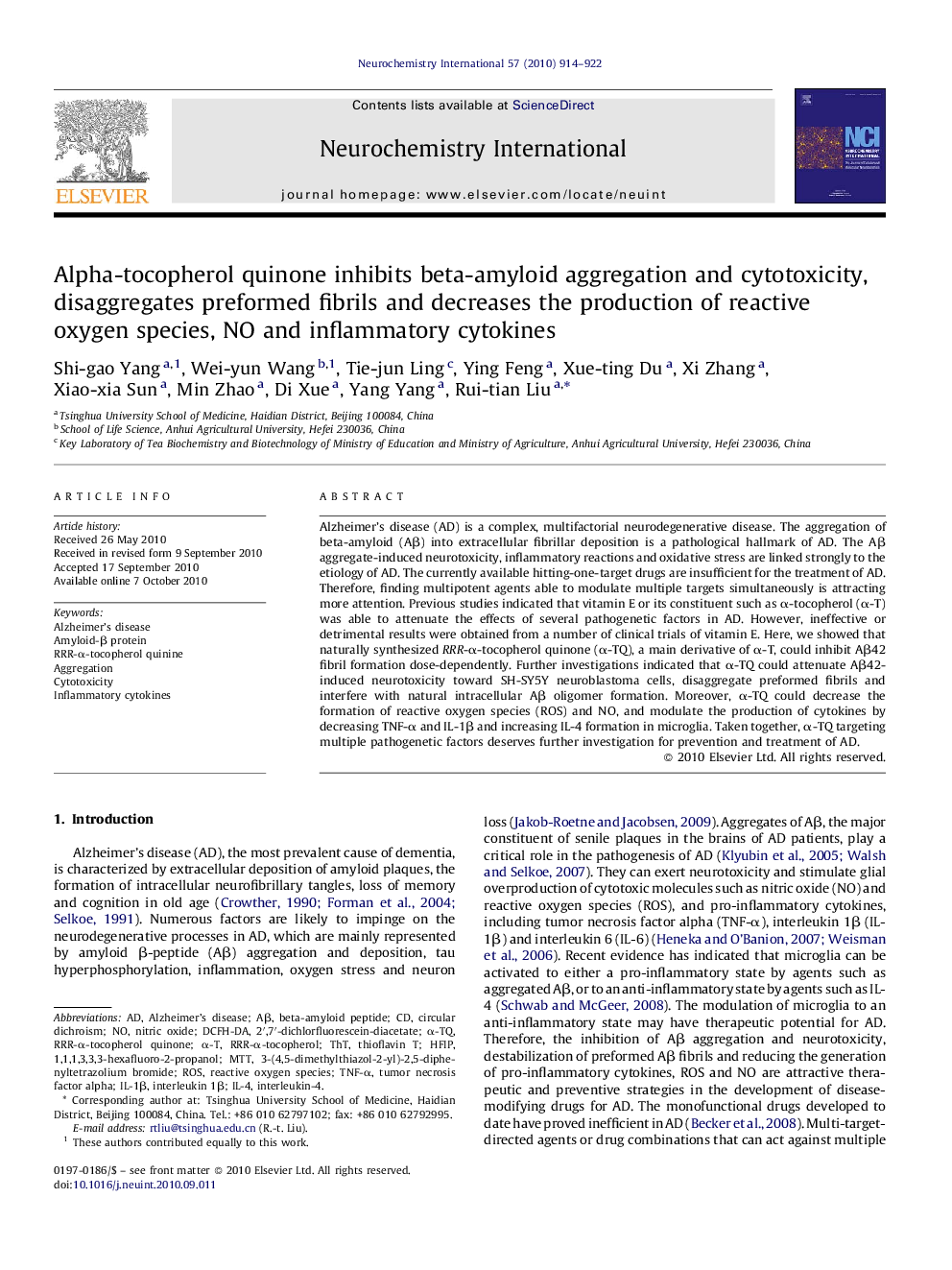| کد مقاله | کد نشریه | سال انتشار | مقاله انگلیسی | نسخه تمام متن |
|---|---|---|---|---|
| 2201124 | 1099999 | 2010 | 9 صفحه PDF | دانلود رایگان |

Alzheimer's disease (AD) is a complex, multifactorial neurodegenerative disease. The aggregation of beta-amyloid (Aβ) into extracellular fibrillar deposition is a pathological hallmark of AD. The Aβ aggregate-induced neurotoxicity, inflammatory reactions and oxidative stress are linked strongly to the etiology of AD. The currently available hitting-one-target drugs are insufficient for the treatment of AD. Therefore, finding multipotent agents able to modulate multiple targets simultaneously is attracting more attention. Previous studies indicated that vitamin E or its constituent such as α-tocopherol (α-T) was able to attenuate the effects of several pathogenetic factors in AD. However, ineffective or detrimental results were obtained from a number of clinical trials of vitamin E. Here, we showed that naturally synthesized RRR-α-tocopherol quinone (α-TQ), a main derivative of α-T, could inhibit Aβ42 fibril formation dose-dependently. Further investigations indicated that α-TQ could attenuate Aβ42-induced neurotoxicity toward SH-SY5Y neuroblastoma cells, disaggregate preformed fibrils and interfere with natural intracellular Aβ oligomer formation. Moreover, α-TQ could decrease the formation of reactive oxygen species (ROS) and NO, and modulate the production of cytokines by decreasing TNF-α and IL-1β and increasing IL-4 formation in microglia. Taken together, α-TQ targeting multiple pathogenetic factors deserves further investigation for prevention and treatment of AD.
Research highlights▶ RRR-α-tocopherol quinone (α-TQ), a main derivative of α-T, could inhibit Aβ42 fibril formation dose-dependently, disaggregate preformed fibrils and interfere with natural intracellular Aβ oligomer formation. ▶ Alpha-TQ attenuated Aβ42-induced neurotoxicity toward SH-SY5Y neuroblastoma cells by decreasing the formation of reactive oxygen species (ROS) and NO. ▶ Moreover, α-TQ modulated the production of cytokines by decreasing TNF-α and IL-1β and increasing IL-4 formation in microglia.
Journal: Neurochemistry International - Volume 57, Issue 8, December 2010, Pages 914–922